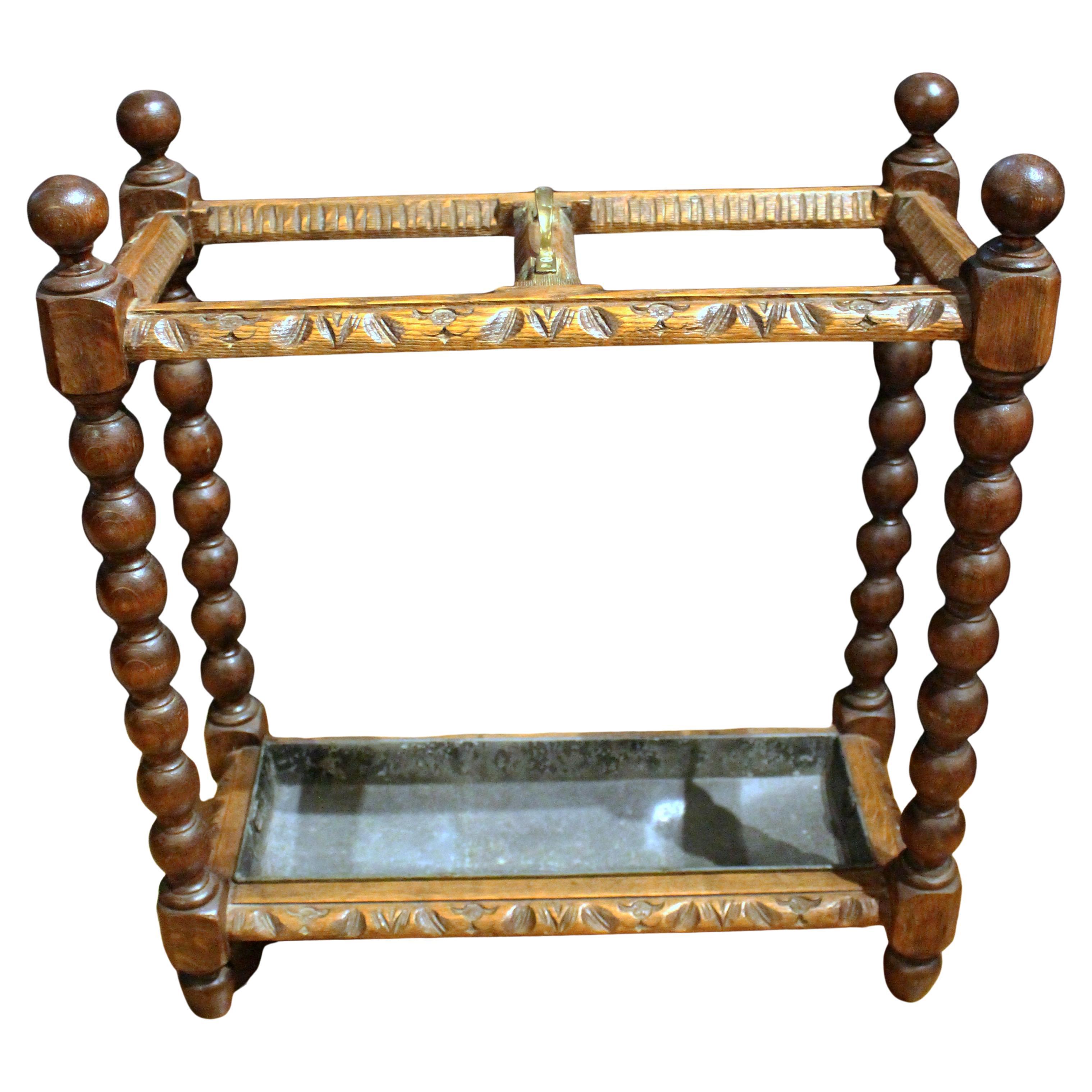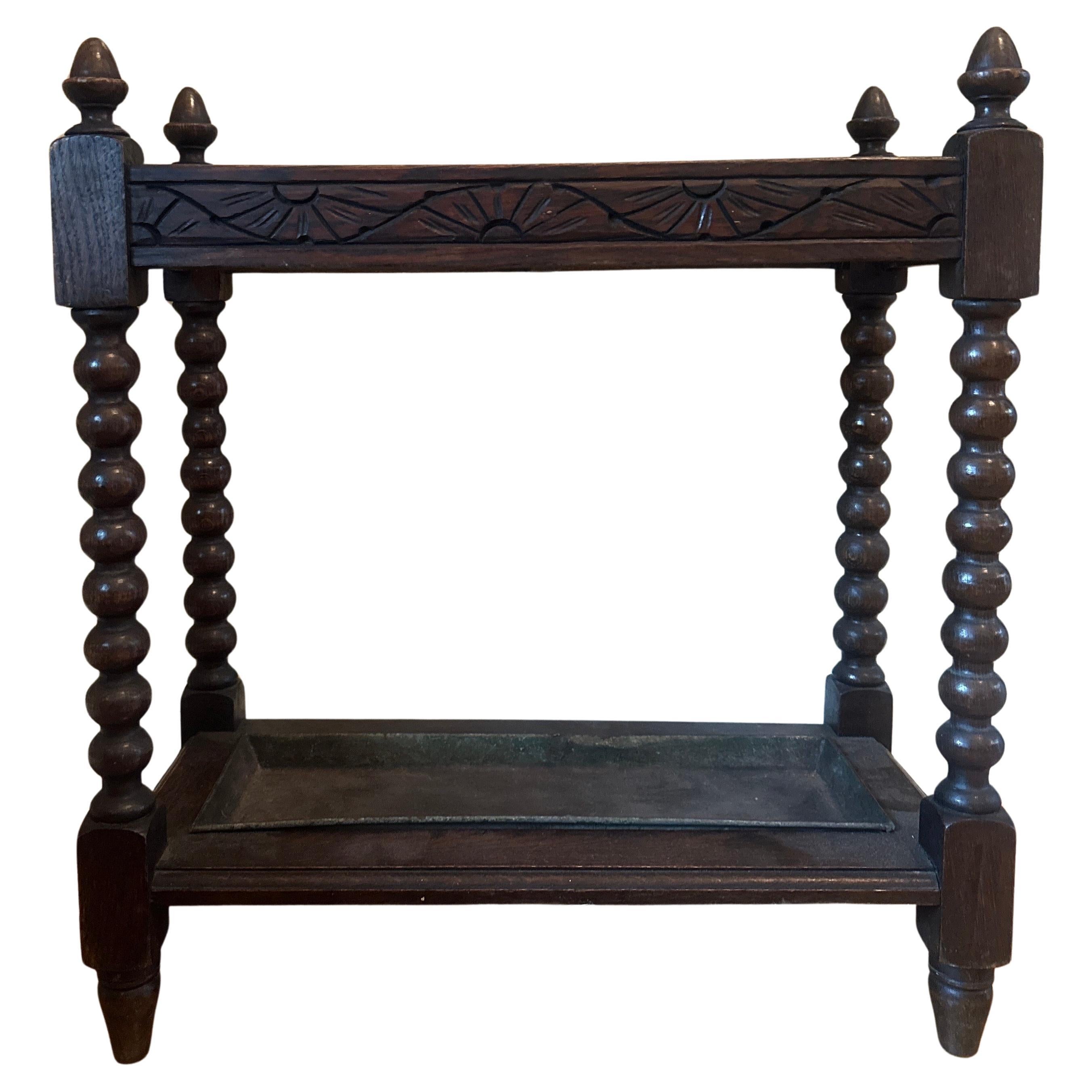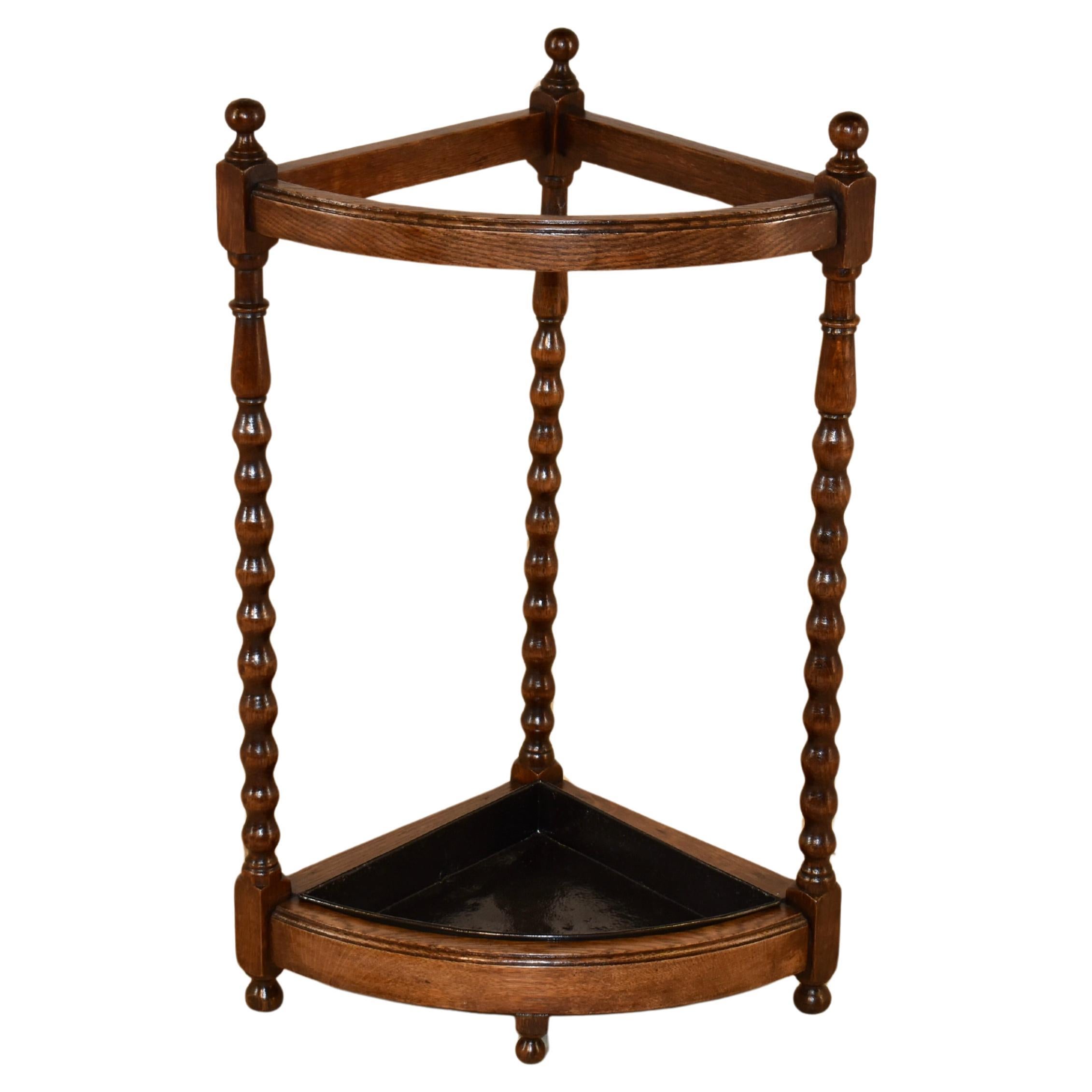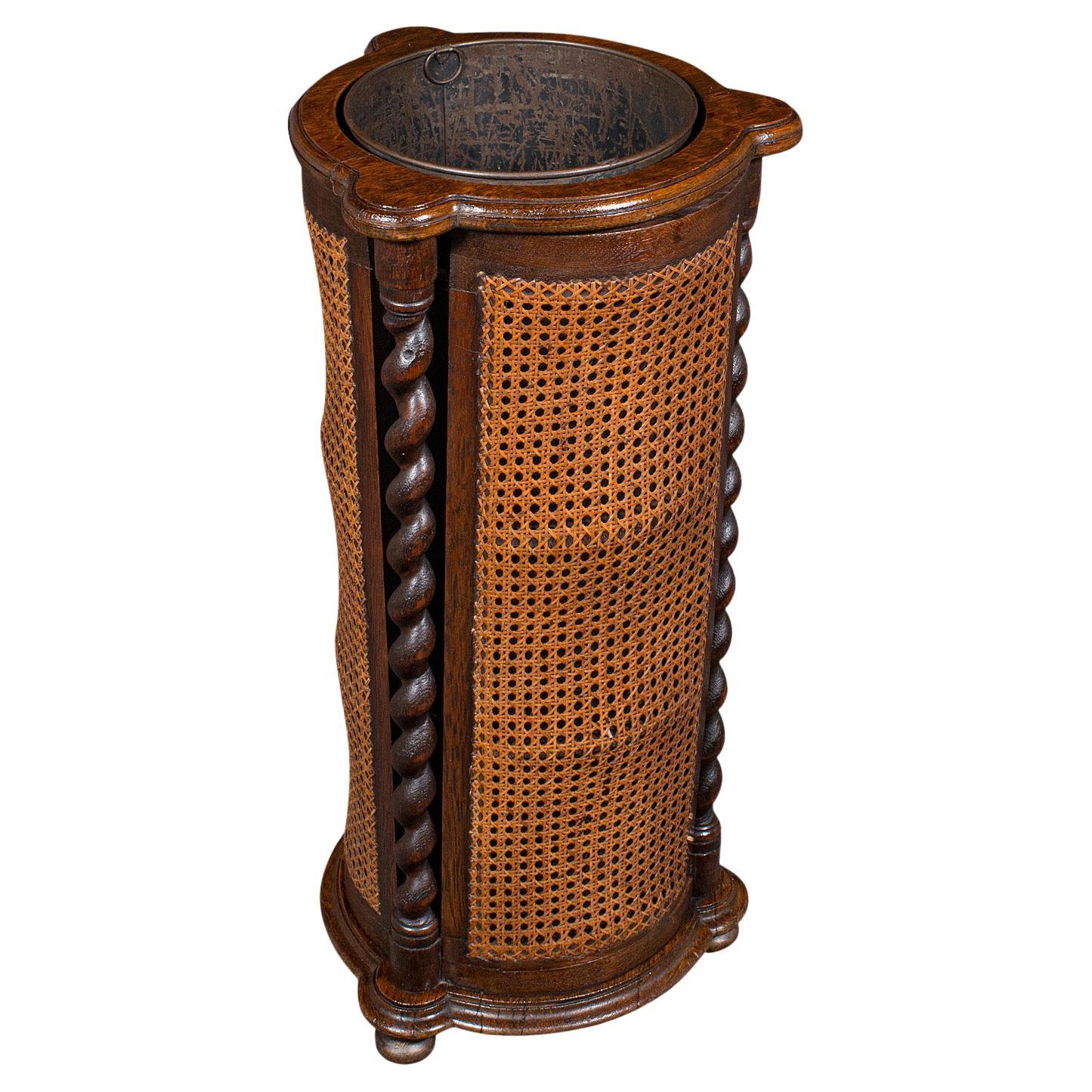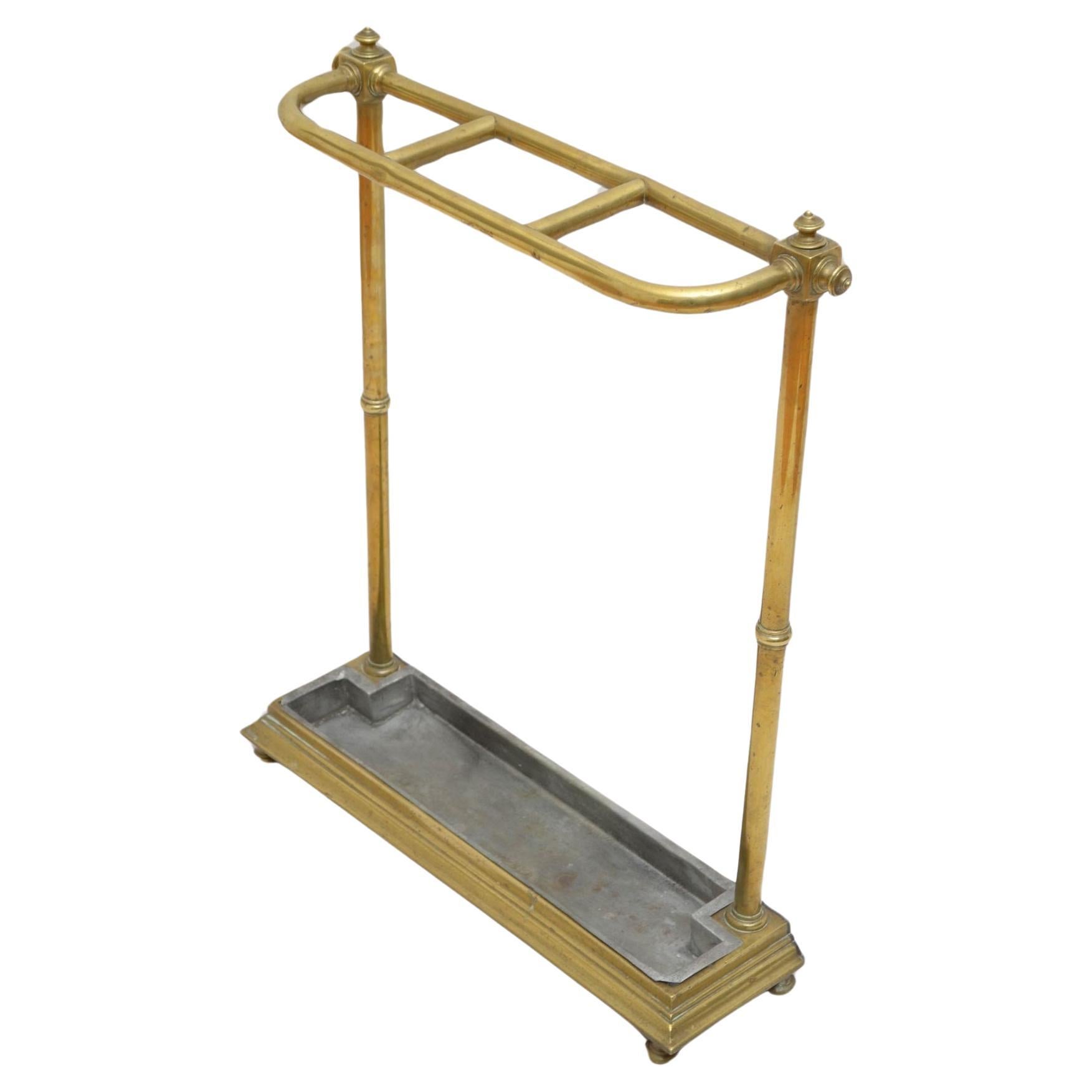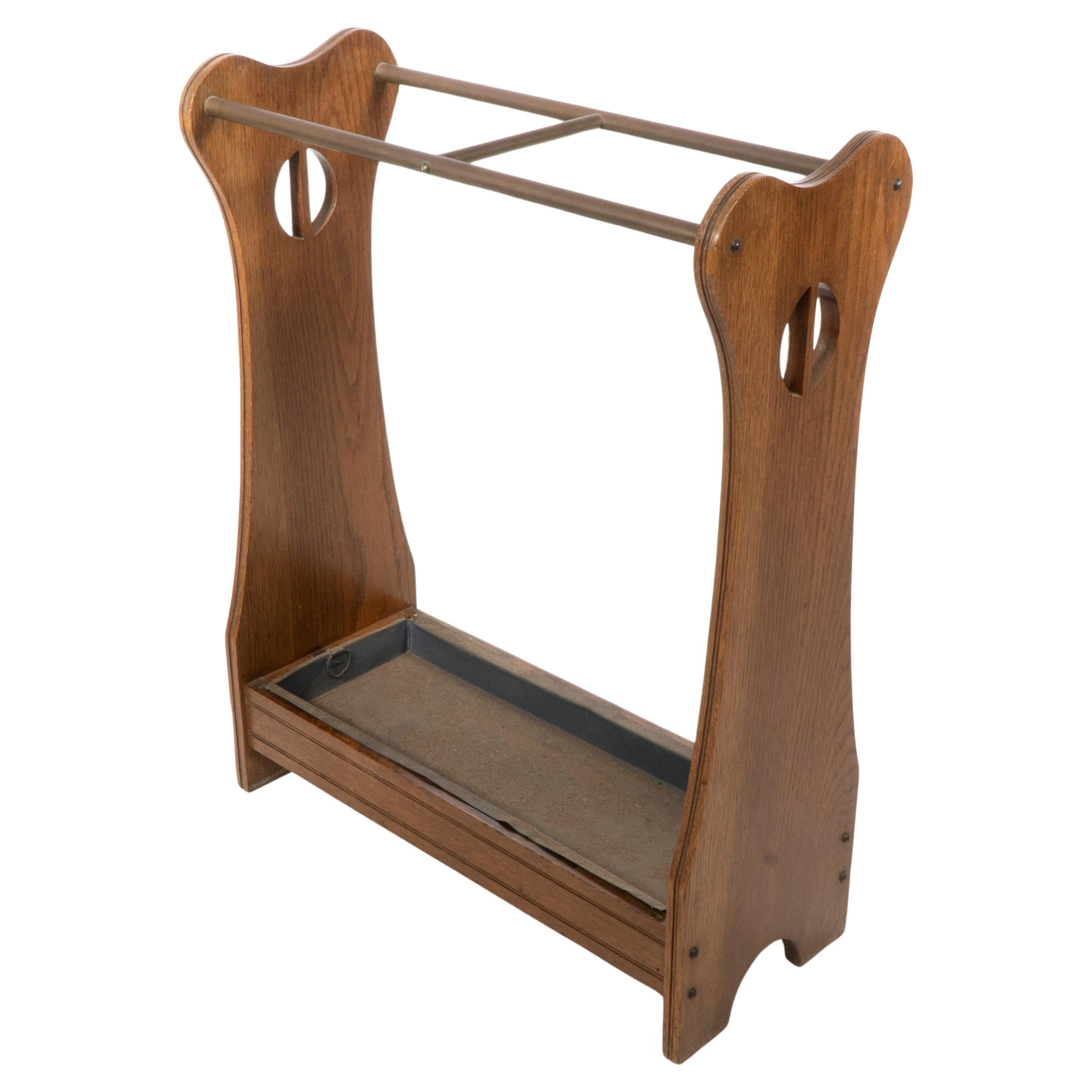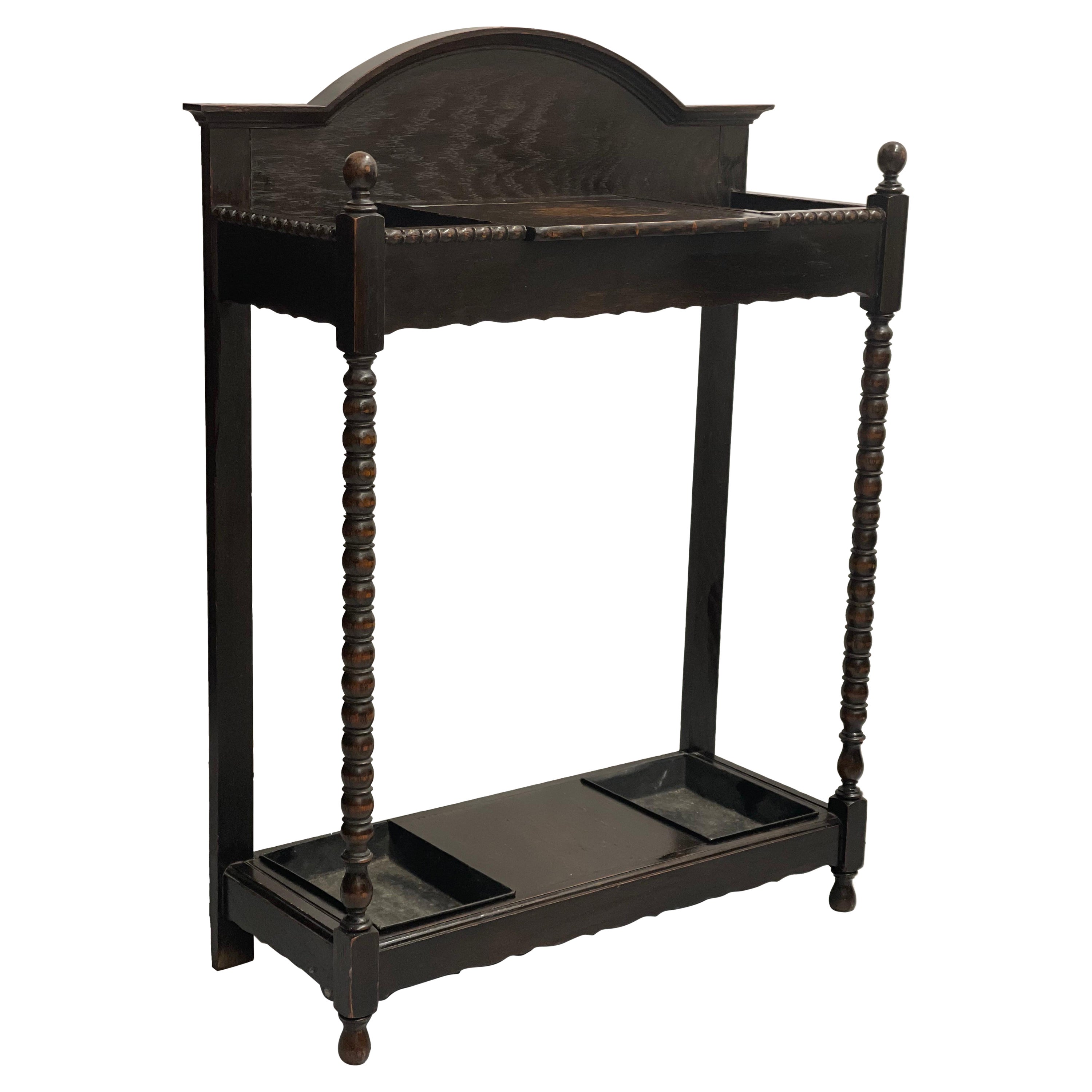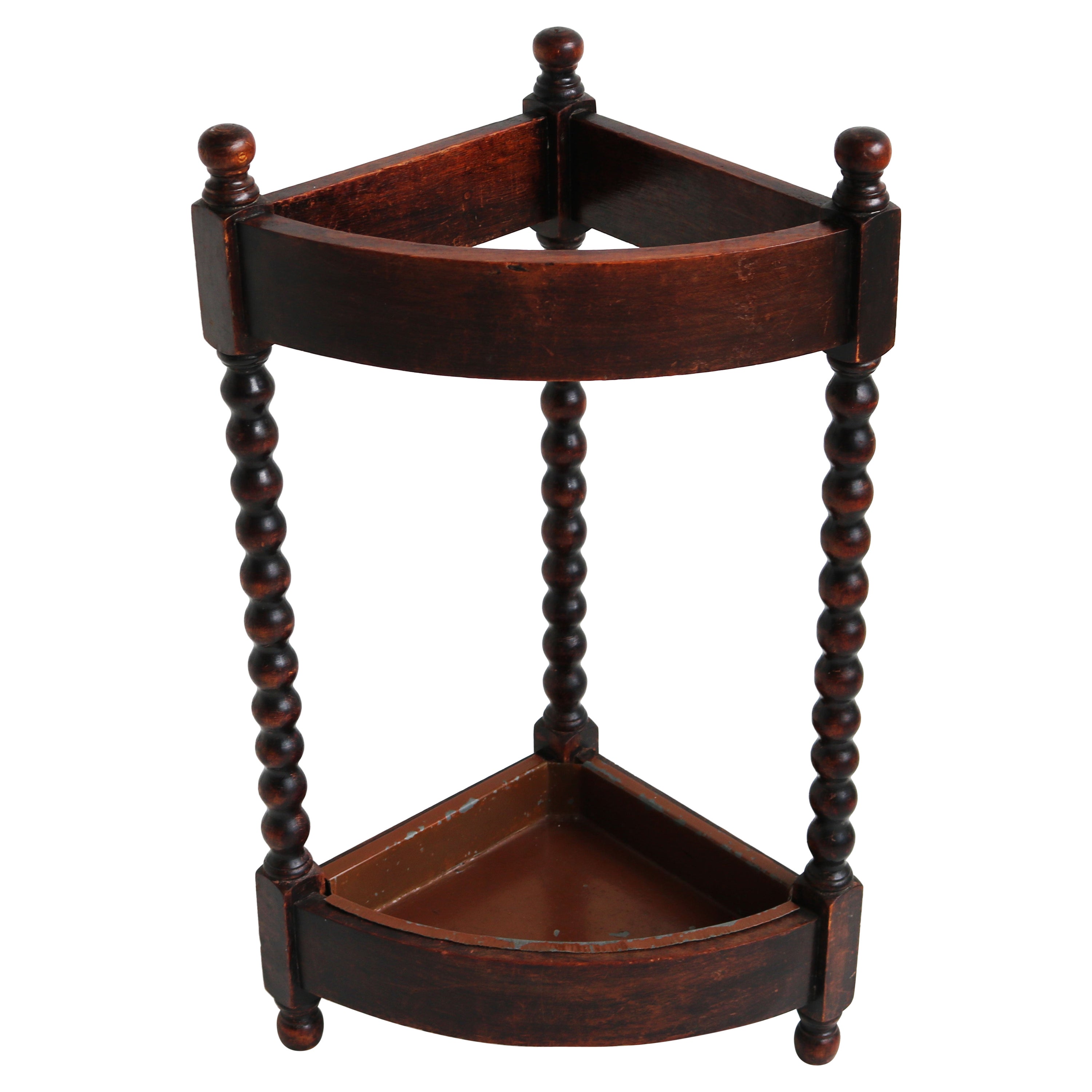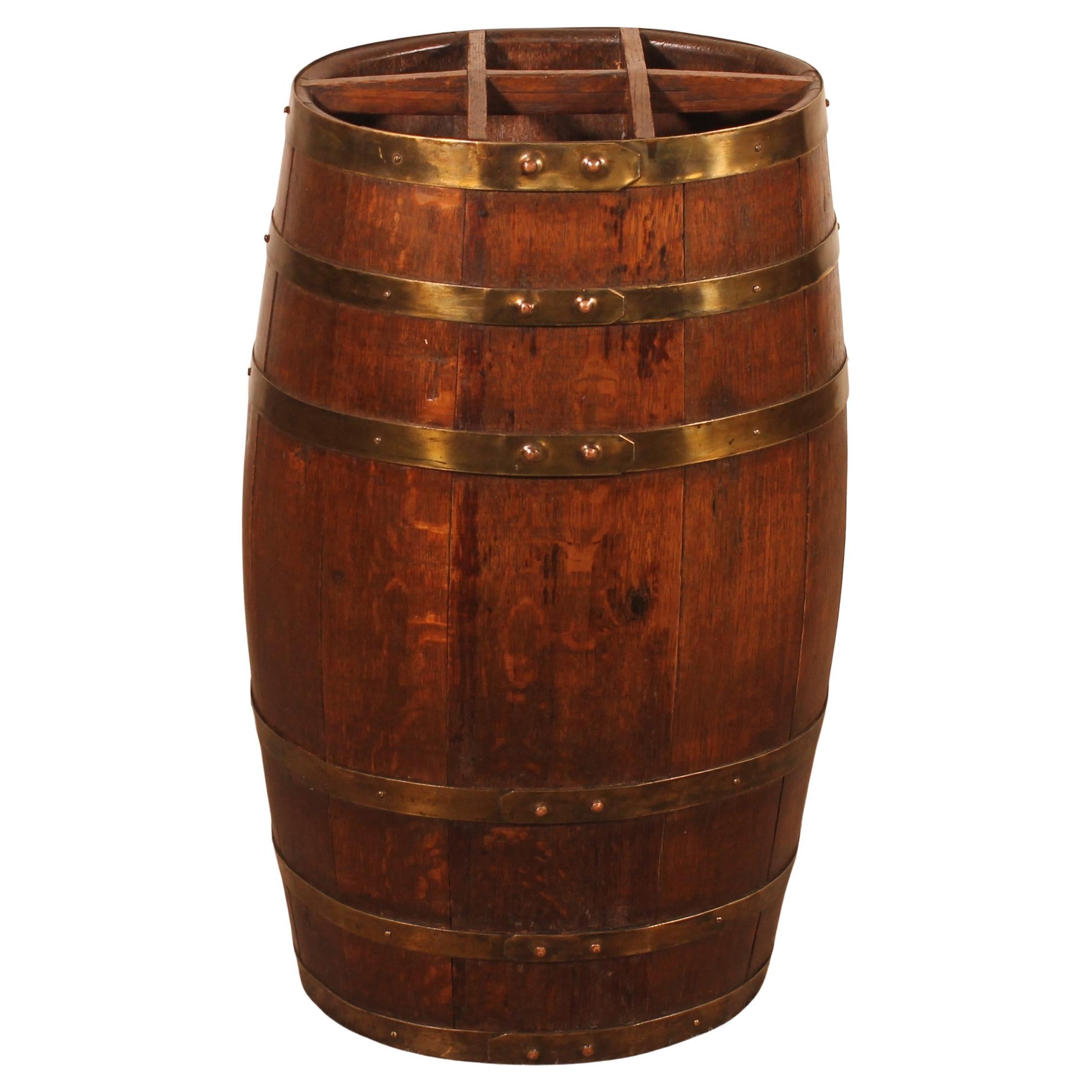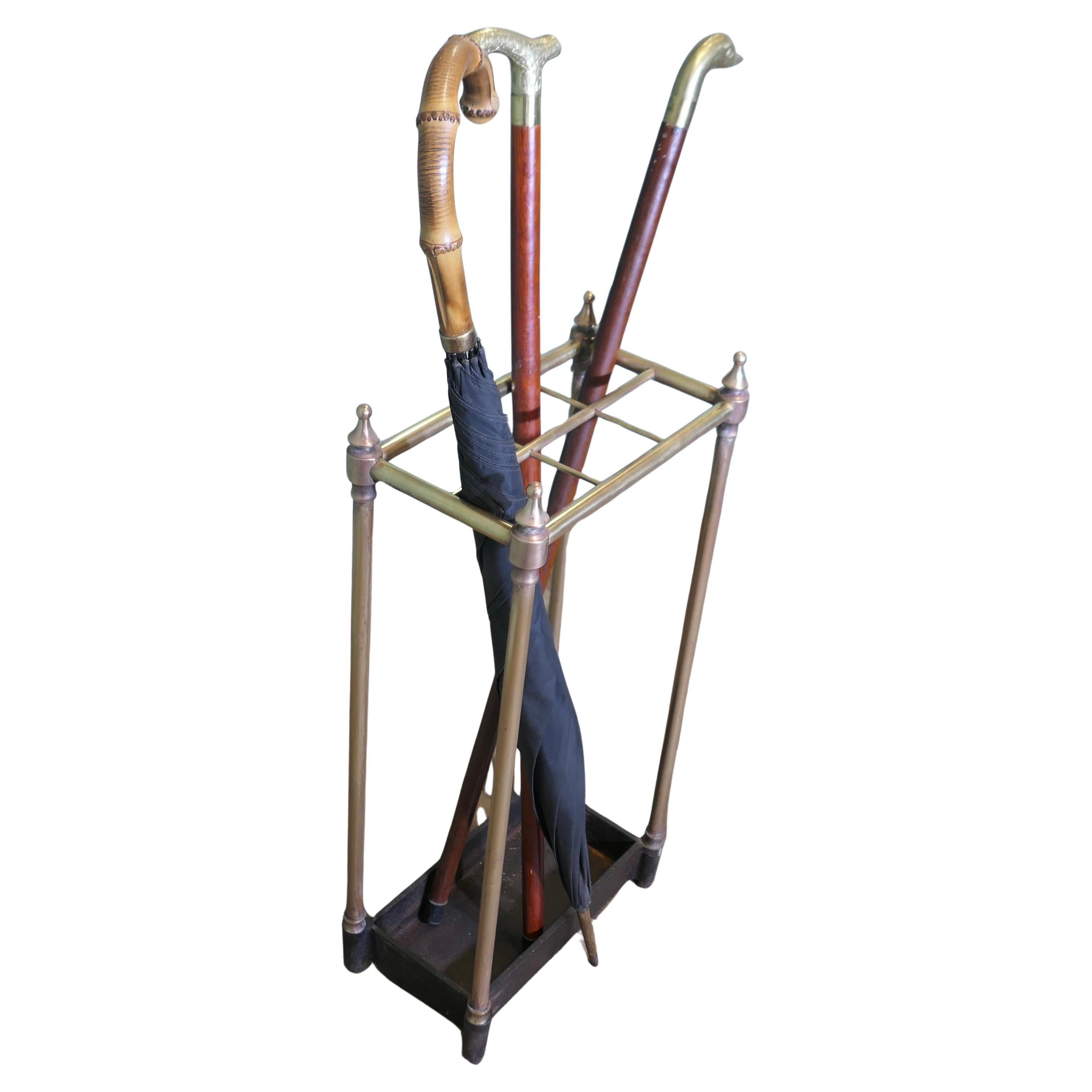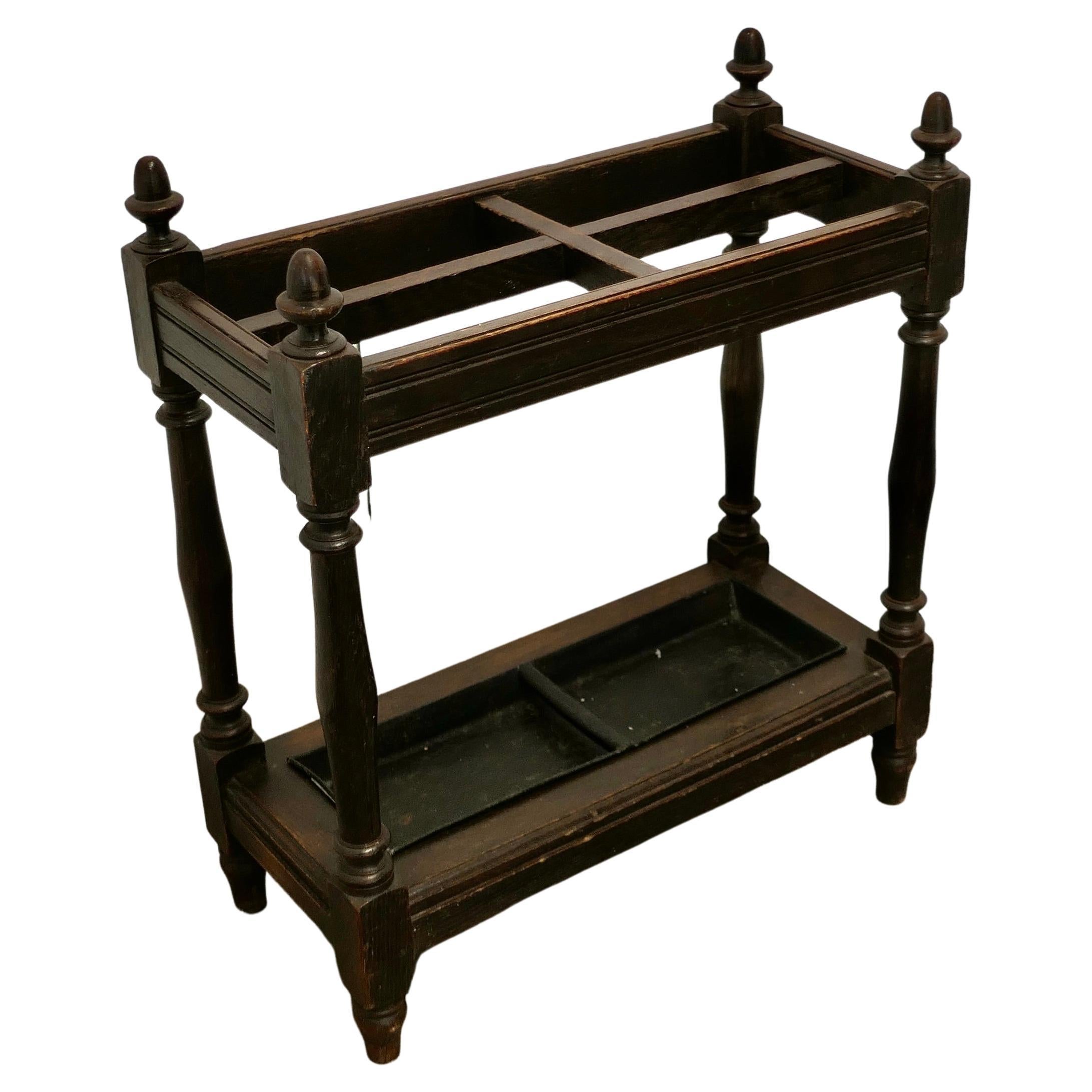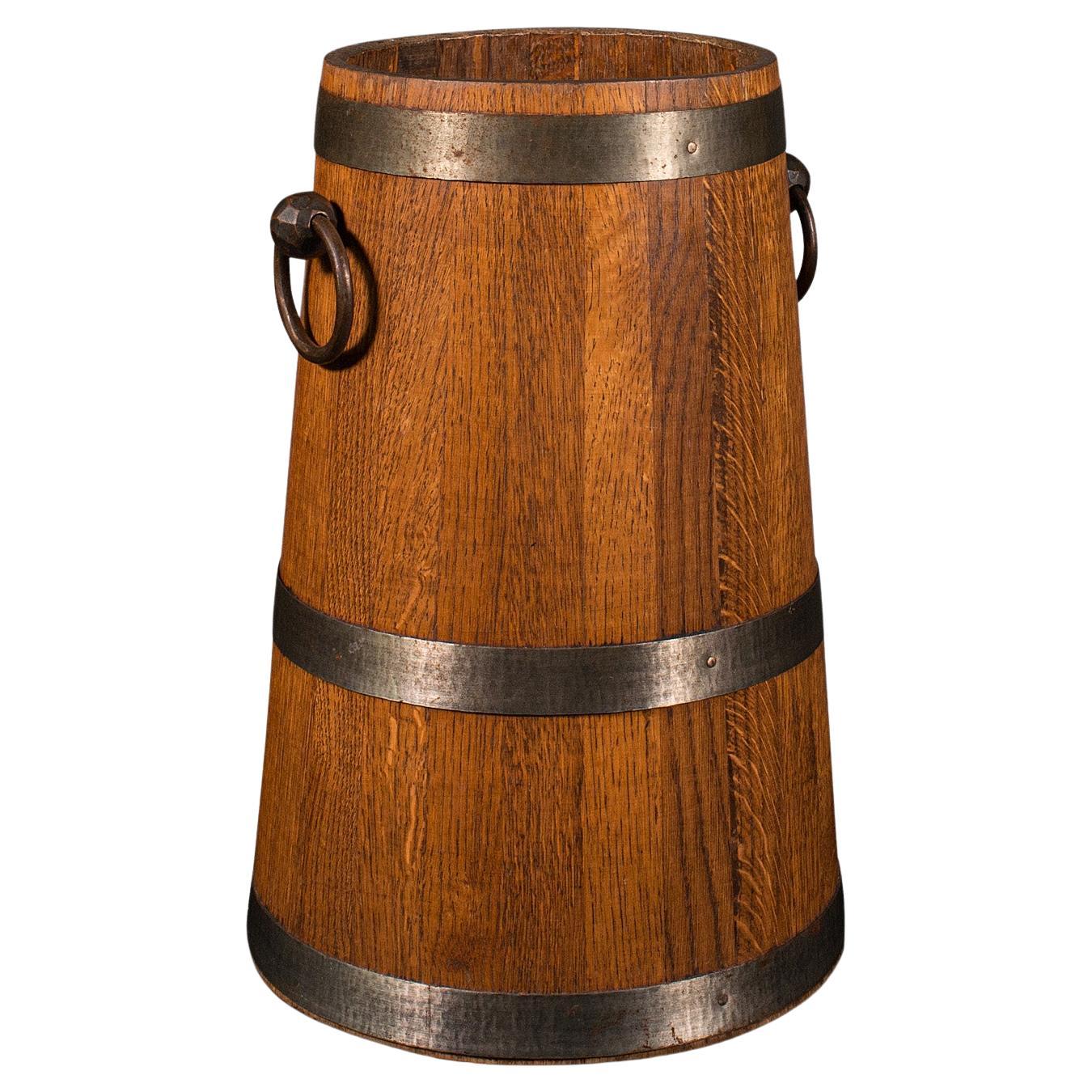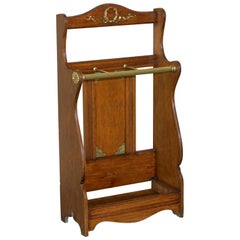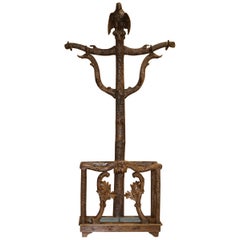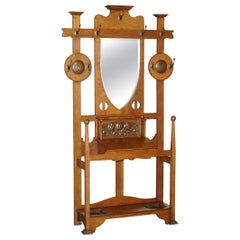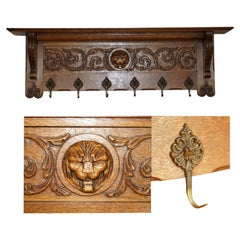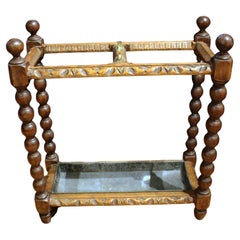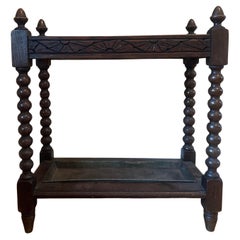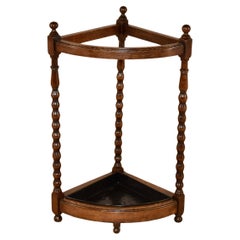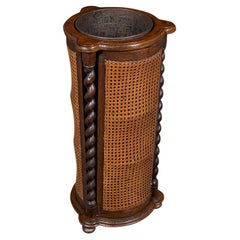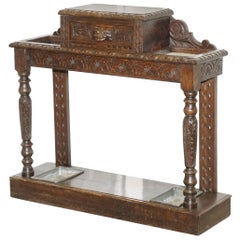
Stunning Original Greenman Carved Solid English Oak Walking Stick Umbrella Stand
View Similar Items
Want more images or videos?
Request additional images or videos from the seller
1 of 21
Stunning Original Greenman Carved Solid English Oak Walking Stick Umbrella Stand
About the Item
- Dimensions:Height: 33.47 in (85 cm)Width: 35.24 in (89.5 cm)Depth: 11.23 in (28.5 cm)
- Style:Edwardian (Of the Period)
- Materials and Techniques:
- Place of Origin:
- Period:1900-1909
- Date of Manufacture:20th Century
- Condition:Wear consistent with age and use. Minor losses. Minor structural damages. Minor fading.
- Seller Location:West Sussex, GB
- Reference Number:1stDibs: LU2823311381141
About the Seller
4.7
Platinum Seller
Premium sellers with a 4.7+ rating and 24-hour response times
Established in 2012
1stDibs seller since 2017
1,970 sales on 1stDibs
Typical response time: 1 hour
Authenticity Guarantee
In the unlikely event there’s an issue with an item’s authenticity, contact us within 1 year for a full refund. DetailsMoney-Back Guarantee
If your item is not as described, is damaged in transit, or does not arrive, contact us within 7 days for a full refund. Details24-Hour Cancellation
You have a 24-hour grace period in which to reconsider your purchase, with no questions asked.Vetted Professional Sellers
Our world-class sellers must adhere to strict standards for service and quality, maintaining the integrity of our listings.Price-Match Guarantee
If you find that a seller listed the same item for a lower price elsewhere, we’ll match it.Trusted Global Delivery
Our best-in-class carrier network provides specialized shipping options worldwide, including custom delivery.More From This Seller
View AllANTIQUE ViCTORIAN HARDWOOD & BRASS JAMES JAS SHOOLBRED STICK UMBRELLA STANd
By Jas Shoolbred & Co.
Located in West Sussex, Pulborough
Royal House Antiques
Royal House Antiques is delighted to offer for sale this lovely Antique Victorian Brass & Mahogany fully stamped stick umbrella stand circa 1880
Please note th...
Category
Antique 1880s English High Victorian Umbrella Stands
Materials
Brass
Rare 1880 American Eagle Black Forest Wood Carved Coat Hat & Umbrella Rack Stand
Located in West Sussex, Pulborough
We are delighted to this very rare original Black Forest wood hand carved coat hat and umbrella rack finished with large American eagle
A very rare and collectable piece, I’ve onl...
Category
Antique 1880s German Black Forest Hat Racks and Stands
Materials
Wood
ANTiQUE 1900 ARTS & CRAFTS SHAPLAND AND PETTER HALL COAT GLOVE UMBRELLA STAND
By Shapland & Petter
Located in West Sussex, Pulborough
Royal House Antiques
Royal House Antiques is delighted to offer for sale this stunning original Arts & Crafts Shapland & Petter Hall stand with hand hammered Copper panels over a Walnut frame with inset sheild mirror
Please note the delivery fee listed is just a guide, it covers within the M25 only for the UK and local Europe only for international, if you would like an accurate quote please send me your postcode and I’ll provide you with the exact price
A very good looking well made and decorative hat glove coat and scarf rack, this one is rare as it has the central mirror and its an earlier than usual example circa 1900
Made by Shapland & Petter, a full blub on their life and works can be found below
In terms of the condition it is straight and solid, the piece sits well in any setting and looks decorative and very English country house, we have cleaned waxed and polished the timber, there is one hook slightly bent, otherwise its in fine order
Dimensions
Height:- 205cm
Width:- 113cm
Depth:- 40cm
Please note all measurements are taken at the widest point, if you would like any additional or specific measurements please ask
Shapland and Petter of Barnstaple
Introduction
This Barnstaple based company manufactured some of the finest pieces of furniture in Arts and Crafts style but very little has been written about the company or the pieces they produced. It a great shame that whilst Shapland and Petter pieces have been illustrated in books and auction catalogues they are invariably attributed to other makers such as Liberty and Co in London or Wylie and Lochhead in Glasgow. With this feature, we intend to inspire a more thorough appreciation of the work of the company; readers are invited to help with the task by sending photographs and information.
Collectors and auction houses are now showing significantly more interest in Shapland and Petter pieces. The company, based in Barnstaple, England produced a very wide range of furniture in several different styles including many pieces in period reproduction and municipal style for town halls and commercial premises alongside their superb Arts and Crafts range
Distinctive features of their superb Arts and Crafts style are the use of heart shaped piercing, geometric shapes with angled arches and the application of repousse copper panels. Decoration with marquetry, metal inlay, mounting of ceramic and enamel cabochons were techniques which they mastered with a combination of state of the art technology and traditional craftsmanship. Most distinctively, the pieces were extremely well made, with care and very best quality materials
The growing interest in Shapland and Petter has raised many questions about the origins of the firm, and the sources of influence on their designs, some of which resemble designs by Ashbee, Ballie Scott, Voysey and Talwin Morris. Links have been assumed with Liberty and Co with the supposition Shapland and Petter worked on commissions for Liberty. There appears to be little evidence to support many of the assumptions which have developed around the company and this article is intended to help to start the discussion and to stimulate research
The History of Shapland and Petter
The Museum of North Devon in Barnstaple have an archive of Shapland and Petter which includes some company records and a small display of furniture and related items. The following text gives history of the company and is reproduced from the display boards in the museum with kind permission of North Devon Museums
For over 100 years the Shapland and Petter factory has stood at the end of Barnstaple Long Bridge. Manufacturers of doors, door sets, and custom wood interiors, NT Shapland and Petter Ltd are still one of the towns largest employers. The company was established by Henry Shapland (b. 1823), a cabinet maker by trade. He embarked on a voyage to America in 1848, where he was inspired by an invention for a wave-moulding machine. He was only allowed to see it if he left the country immediately. Returning home with only rough notes, he reproduced the machine and in 1854 began a cabinet making business in one room at the Raleigh woolen mill in Pilton. Later the firm moved to Bear Street in Barnstaple. Henry Petter was an accountant who entered into partnership with Mr Shapland. The business progressed and in 1864 they bought the Raleigh Factory where Shapland first began his work. Success was rapid, but in 1888 the building burnt down. Immediately work began on a bigger and better factory - their present site by the Long Bridge - which included many modern inventions
The two Henrys died within two years of each other - Petter in 1907 and Shapland in 1909. In 1924 Shapland and Petter merged with the Barnstaple Cabinet Company, producing North Devon's biggest industry. During the First World War Shapland and Petter's skilled craftsmen turned their hands to wooden propellers for the aircraft of the Royal Flying Corps. After the war, public tastes changed, and hand carved furniture was too expensive for many. Shapland and Petter's output now included elegant veneered pieces with smooth Art Deco lines. The company fitted out Pullman carriages and ocean liners and made hand-carved church furniture. The famous England Rugby Captain W. W. Wakefield was appointed Company Director in 1927. Throughout the depression of the late 1920's and early 1930's the company still managed to produce high quality work
Furniture manufacturing continued until the outbreak of the Second World War in 1939. Many workers left to fight, while the factory worked on Air Ministry contracts for ammunition boxes. After the war came radio cabinets and laboratory and contract furniture, until eventually large quantities of doors were being produced for hospitals, hotels, schools, offices and other buildings. Examples of Shapland and Petter's work can be seen all over North Devon. In Barnstaple, the shop front at 109 High Street is a good example, and the interior of the old Lloyd's Bank, now Chamber's Brasserie, was also Shapland's work. Examples of carving by Shapland's men can be seen in two chairs and a reading desk in Barnstaple Parish Church
As cabinet makers, Shapland and Petter employed up to 350 people at a time. There were designers, carvers, cabinet makers, machinists, polishers, and labourers. The company was one of the first to install American labour-saving devices and was keen to adopt the most up-to-date machinery
The fire of 1888 at the Raleigh Cabinet Works was a huge loss for the company. However, it resulted in a new factory which was altogether more modern and better equipped. The new building by the river was arranged into blocks. The production line began with the saw mills and ended with the finishing rooms. There was modern machinery in every department - one of their saws was the first of its kind in Britain. Water sprinklers and electric lights were a necessity - this factory would not burn down
As well as the furniture production, Shapland and Petter imported timber by sea and rail. The new factory 's facilities were exceptional
Shapland and Petter were renowned for excellent design and workmanship. The carvers were highly skilled, serving seven year apprenticeships and attending classes at the Barnstaple School of Art. Ornately carved furniture required up to a hundred tools
The factory produced made to order woodwork for banks, hotels, and shops; mantelpieces, paneling and staircases. They fitted out Pullman railway carriages, the London Guildhall, and Edgar Wallace 's dining room as well as houses like Tapeley Park in North Devon
Much of the work involved intricate leaded glass panels, or inlaid fruitwood designs, like the white bedroom suite shown in the exhibition here. This type of work is typical of Art Nouveau 1895 to 1910, inspired by the fluid shapes of plants and flowers
Many pieces were made from standard designs. There were hundreds to choose from, and a selection could be seen in local and London showrooms and in catalogues. Although mass-produced, this furniture was well-made by skilled technicians and modern machinery
Arts and Crafts designs of Shapland and Petter
The development of the Arts and Crafts Movement in the South West of England has not been written up in any detail though we do know of the Art Potters of Barnstaple from the excellent book of this name by Audrey Edgeler. Less is known of the Barnstaple Guild of Metal Workers. We know of the Bath Cabinet Makers and the Newlyn School of Industrial Art in Cornwall but very little has been written about the furniture makers of Barnstaple in Devon
The establishment of a large cabinet making firm in Barnstaple is not remarkable in itself; there were several cabinet makers in the area. What is interesting is that this particular Barnstaple firm should become a leading maker of Arts and Crafts furniture, copying the styles of the leading Architect designers and creating their own unique style
Critics may point out that as their work was commercially driven and reliant upon machines it therefore does not really qualify as Arts and Crafts. Whilst the company was highly innovative in machine technology, they also employed many craftsmen who worked with their hands in woodcarving, marquetry work, design and application of decorative copperwork and other artistic embellishment in the true Arts and Crafts tradition. Anyone who has experience of Shapland and Petter workmanship knows the level of craftsmanship invested in each piece
Sources of inspiration
There appears to be no evidence to link any known architect, artist or designer to the Shapland and Petter company. Their designs appear to have been created solely by their own internal design staff none of whom appear to have published or registered their work in any other context
C. R. Ashbee who established the Guild of Handicrafts visited Barnstaple in 1893 and provided a twelve week course on the design and decoration of furniture. It is presumed that this visit was hosted by Shapland and Petter, and that their own staff and those from other local furniture makers attended the course. Ashbee appears to have been unimpressed by the commercial attitudes he encountered and apparently disappointed at the lack of interest in his (high minded) lectures. What is interesting however is the similarity between some of his designs and those used by Shapland and Petter, particularly in respect to inlaid floral design. Perhaps he left a lasting influence which has not yet been verified
There has been some speculation on the influence of Scottish designers, particularly because of the use of Glasgow rose designs which are typical of the Glasgow School, and particularly of Talwin Morris. There are also several designs which use similar motifs to those used by Baillie Scott, the use of two doves in flight for example. More research is needed to trace possible links here. One thing that is clear is that there was a great deal of copying and selling designs in the furniture industry at the time and a nineteenth century survey on the furniture trade recorded that '' Barnstaple pays the best prices for designs ..''
Collaboration with other companies
There is evidence that Shapland and Petter organised a wide network of companies to retail their products and hence many pieces have the labels of retail furnishers added. Little is known of their marketing in Europe and America but it may be that many Arts and Crafts pieces were sold abroad. Shapland and Petter had excellent access to rail and shipping lines for importing timber and presumably for exporting their finished products
The extent of their collaboration with other companies is yet to be ascertained but there is evidence that their suppliers included the Della Robbia Pottery, Pilkingtons Tile...
Category
Antique Early 1900s English Arts and Crafts Coat Racks and Stands
Materials
Copper
Fine Dutch Heavily Carved Oak Coat Hat Scarf Wall Rack Hanger Lion Head Carved
Located in West Sussex, Pulborough
We are delighted to offer for sale this lovely, heavily carved Dutch oak wall hanging coat hat and scarf rack with French Lion's head central carving ...
Category
20th Century Danish Country Coat Racks and Stands
Materials
Oak
Antique Original Late Victorian circa 1880 Thonet Bentwood Coat Rack Stand
By Thonet
Located in West Sussex, Pulborough
We are delighted to offer for sale this Antique original, circa 1880, extra large, Thonet Bentwood solid Beech wood eight prong coat stand / rack.
This is in my opinion the finest hat, coat and...
Category
Antique 1880s European Late Victorian Coat Racks and Stands
Materials
Beech, Bentwood
SUPER RARE ORIGINAL ANTiQUE VICTORIAN CIRCA 1880 THONET BENTWOOD COAT RACK STAND
By Thonet
Located in West Sussex, Pulborough
Royal House Antiques
Royal House Antiques is delighted to offer for sale this super rare, antique original, circa 1880, extra large, Thonet Bentwood solid Beech wood eight prong coa...
Category
Antique 1880s European Victorian Hat Racks and Stands
Materials
Beech, Bentwood
You May Also Like
Circa 1880 Carved Oak English Umbrella & Stick Stand
Located in Chapel Hill, NC
Circa 1880 carved umbrella & stick stand, English. Oak with central brass carrying handle. Bobbin turned, ball tipped standards & carved structure of leaves. Two large sections. Orig...
Category
Antique Late 19th Century English Aesthetic Movement Umbrella Stands
Materials
Brass
19th century carved oak English Umbrella bobbin stick stand
Located in Roswell, GA
19th century oak carved English bobbin stick stand. Found in Stratford upon Avon. It appears to have original pan and can withstand water in the shallow pan. There are carvings on th...
Category
Antique Late 19th Century English Victorian Umbrella Stands
Materials
Wood
English Oak Corner Umbrella or Stick Stand, Circa 1900
Located in High Point, NC
Circa 1900 period Edwardian oak still or umbrella stand that fits in a corner. The top is decorated with finials and a curved front rail and simple side rails. The top is supported...
Category
Antique Early 1900s English Edwardian Umbrella Stands
Materials
Metal
Antique Cylindrical Stick Stand, English, Oak, Reception, Umbrella, Edwardian
Located in Hele, Devon, GB
This is an antique cylindrical stick stand. An English, oak and bergère reception hall umbrella bin, dating to the Edwardian period, circa 1910.
Pre...
Category
Early 20th Century British Edwardian Umbrella Stands
Materials
Oak
Victorian Brass D Shaped Walking stick Stand Umbrella Stand
Located in Whaley Bridge, GB
k0255A Unusual Victorian umbrella stand in brass having three divisions and very decorative reeded finials to the top and sides, raised on reeded uprights terminating in stepped base...
Category
Antique 19th Century English Umbrella Stands
Materials
Brass
An Arts and Crafts oak umbrella and walking stick stand
Located in London, GB
An Arts and Crafts oak umbrella and walking stick stand with brass division rails to the top and pierced decoration to the sides, and drip tray to the base.
Category
Vintage 1910s English Arts and Crafts Umbrella Stands
Materials
Oak
Recently Viewed
View AllMore Ways To Browse
Leather Umbrella Stands
English Oak Stick Stand
Antique Oak Umbrella Stand
Gold Umbrella Stand
Brass Stick Stand
Walking Sticks
Umbrella Shaped Stand
Antique Cast Iron Umbrella Stand
Umbrella Stand Red
Ceramic Umbrella Stand
Tall Umbrella Stand
French Iron Umbrella Stand
Metal French Umbrella Stand
Antique Wood Umbrella Stand
Walking Stick Stand
19th Century Brass Umbrella Stand
Brass Umbrella Stick Stand
Brass Umbrella Holder
